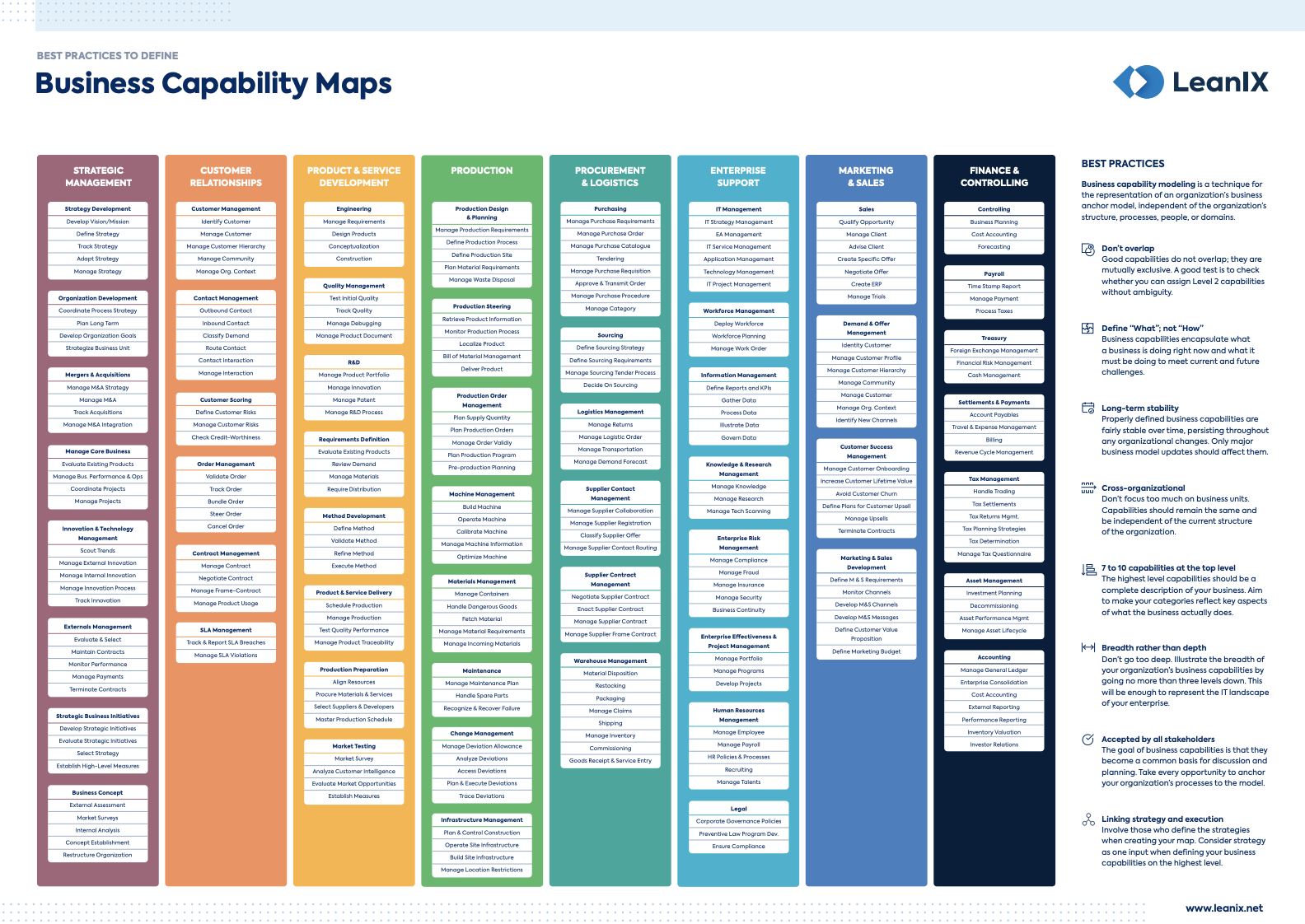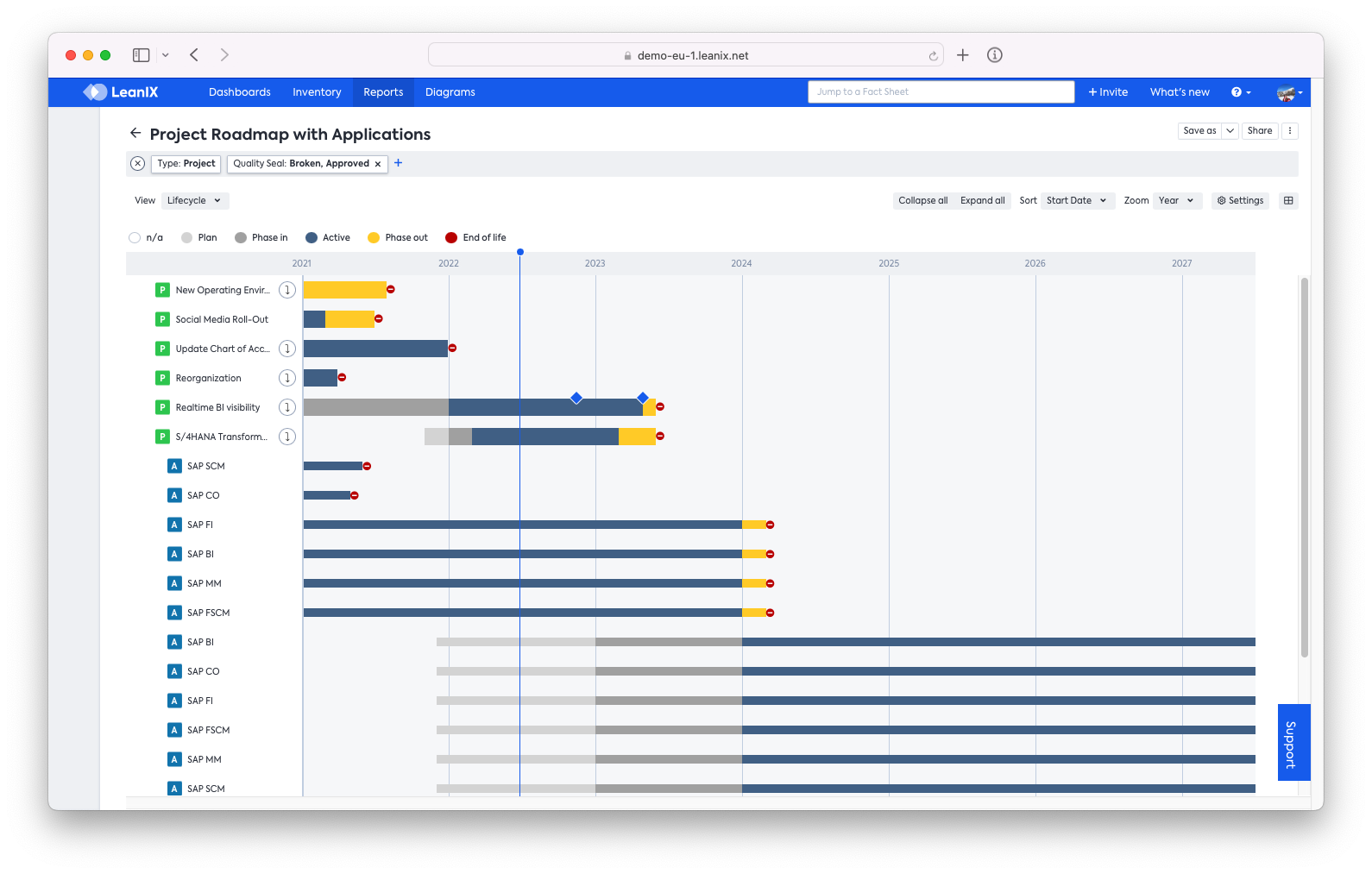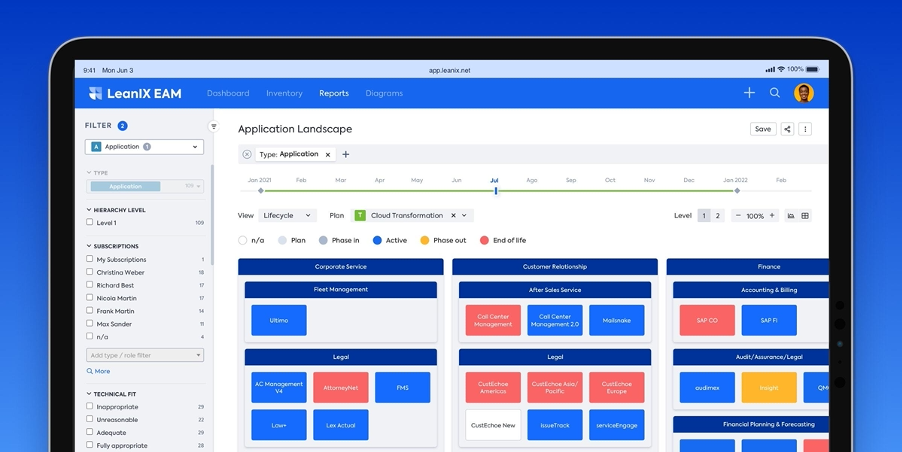Application rationalization's most challenging aspect is often where to begin. We spoke to Dawit Lessanu from Estée Lauder about how his team leveraged LeanIX EAM to develop an eight-step methodology for application portfolio optimization.
Application rationalization is a straightforward process of organizing your software application portfolio. Yet, when you're trying to rationalize a sprawling portfolio of around 200 applications, on average, without fully understanding who owns each application and what it is for, it can become overwhelming.
In this case, the best way to enable an application rationalization initiative is to gain an understanding of your application landscape and to formulate a clear plan of action. LeanIX EAM empowers enterprise architects with the intelligence they need and a way to visualize their roadmap to rationalization.
This is particularly important for Estée Lauder, one of the world's leading cosmetics companies, which uses LeanIX EAM to support regular application rationalization initiatives. We spoke to Dawit Lessanu, the company's Executive Director Of Enterprise Architecture (EA), about his team's EA methodology and how LeanIX supports it.
You can watch a video of our conversation above, or read on to discover more about Estée Lauder's eight-step process for app rationalization.
Navigating Application Complexity At Estée Lauder
"Estée Lauder is a very complex organization. We have brands, then we have regions, and then have functions, and each one of these brings their own requirements, wants, desires and opinions on what they need to support their business; but as an enterprise architect, we're looking end-to-end, globally, so we want to optimize while still enabling the business and giving those brands the distinction that they need."
Dawit Lessanu, Executive Director Of Enterprise Architecture, Estée Lauder
Estée Lauder has more than 50,000 employees across the world, several brands, different regions, and numerous teams. Co-ordinating an application portfolio across that entire IT landscape is a tremendous challenge.
For Dawit, the key is to understand the company culture at a granular level, as well as ensure your enterprise architecture function is at a sufficient level of maturity. Only then can you work with each team to ensure their needs are supported and the team understands when the needs of the business take precedence.
This kind of collaboration is essential for success in application rationalization, but how did Estée Lauder achieve it?
Unlock Success With Collaboration
When we spoke to Dawit, he explained that Estée Lauder had no formal application portfolio optimization (APO) process when he began working there. To remedy this, Dawit set his team to work creating an ideal process as a template to start with.
"What I challenged my team was: let's develop an unconstrained vision for how rigorous the breadth and depth of an APO process should be. Then we set out to create an eight-step methodology for doing an application portfolio optimization that was inclusive of a cloud journey"
Dawit Lessanu, Executive Director Of Enterprise Architecture, Estée Lauder
Dawit's team created an eight-step process for application rationalization to use as a template to guide them through their APO initiative. To enable the first step, Dawit engaged LeanIX EAM as a powerful tool for establishing their current IT landscape and building a roadmap through their eight-step process.
Let's explore Estée Lauder's methodology step by step:
Step 1 - Create A Full Application Inventory

The first step in any application rationalization initiative is to understand what applications you have, who uses them, who owns them, and how much they're costing you. The more information you have about each application, the better decisions you can make about optimization.
Estée Lauder uses LeanIX EAM to keep a full inventory of their application portfolio, including detailed, customized information about each application. Storing it all in our EAM allows you to visualize and share this information with all your stakeholders, ensuring alignment across your organization.
To find out more about what the LeanIX EAM can do to support your application rationalization efforts, download our free whitepaper:
FREE WHITEPAPER: A Guide To Application Rationalization
Once you have a full application inventory, however, how do you make the decisions regarding which applications are necessary and which are not? To do that, you need a business capability model.
Step 2 - Map Your Apps To A Business Capability Model

A business capability model (BCM) is a map of all the things your organization needs to be able to do in order to do business. It ensures that you're investing in the right areas in order to drive your core business functions.
The next step in Estée Lauder's methodology was to map all their applications to capabilities in their model, so they could be certain they were supporting the needs of their business. Apps that didn't support business capabilities can be retired, while capabilities without application support may need investment.
The challenge for Estée Lauder, however, was that no formal BCM existed within their business. Creating one was a necessity to ensure that Dawit's team had a shared point of reference with the rest of the business.
When the team spoke about an application not being needed, being able to refer to the BCM and show that the app was extraneous was vital. It was almost like establishing a common language among stakeholders.
For support in creating your own BCM, you can download our free BCM template:
Step 3 - Enhance Communication On App Rationalization

Establishing a common language for talking about application rationalization among stakeholders is vital as winning buy-in is reliant on everyone sharing an understanding of the value of enterprise architecture. Without it, Dawit's team couldn't have gained the support they needed to succeed.
Educating Estée Lauder's application owners about the discipline of enterprise architecture and the value of application rationalization was key for Dawit. This shifts the understanding of the application rationalization effort from a chore for your stakeholders, to a project to invest in increasing IT support for their teams.
Once everyone understands the value of the application rationalization process, it's still important to keep them talking about it. This way, the idea remains fresh in everyone's mind and support doesn't dwindle over time.
Options for increasing communication include:
- Maintaining regular contact with stakeholders on the topic
- Establishing an enterprise architecture forum within your organization
- Reporting to your organization on your progress
- Celebrating application rationalization wins
- Offering read-only access to LeanIX EAM to anyone across your organization at no extra cost
Step 4 - Understand How Your Portfolio Supports The Business

So, you're aligned with the organization on the goal of your application portfolio optimization (APO) process. Now, it's time to deep-dive into your business capability model (BCM) and compare it to your application inventory in LeanIX EAM.
The above steps focused on gathering the support of your stakeholders are key here, as you'll need to gain insight from them into how applications are used. This will allow you to track which applications are mission critical and need support, and which are extraneous to your strategy.
You can then flag each application in LeanIX EAM according to the Gartner TIME methodology, the '6Rs' of cloud migration, or any other methodology you choose. Using custom tags, you can categorize your applications in whatever way you need.
Step 5 - Identify Early Application Rationalization Opportunities

Once you've flagged your applications for action, you can start identifying the quick wins and low-hanging fruit. The best place to start is usually applications that don't support any business capabilities.
Applications that don't track to your business capability model (BCM) aren't mission critical. Looking in LeanIX EAM, you can also see how many users the application has and understand what it's being used for.
It could be that application isn't being used by anyone and can be quickly retired. Other examples of easy wins include applications that:
- need updating to the latest version
- duplicate, and can be replaced by, other applications you use that are a better business fit and you have spare licenses for
- are mission critical and would benefit from greater investment
Scoring these quick and easy wins can provide a proof-of-concept regarding the value of your application rationalization initiative. This will win even more support from your stakeholders.
Step 6 - Drive Global Standards For Mission-Critical Applications

Those aforementioned mission-critical applications are vital for your business, so it's a good idea to put governance in place to support them. By tagging them as critical in LeanIX EAM, you can ensure that everyone knows those applications are important, but it doesn't end there.
Research your critical apps to make sure they're best-of-breed and other applications wouldn't be a better business fit. Likewise, ensure they're regularly updated and contracts are in order.
Step 7 - Optimize Costs

Conversely, some of your applications may not be supporting business capabilities, but may also not be so easy to remove. Perhaps it will take time to migrate users to a new platform or another, mission-critical application is dependent upon a legacy tool.
In this case, it's key to minimize investment in these apps in order to prepare to retire them once you're ready. This way, you're gradually diverting expenditure from extraneous areas into strategic goals.
Between the applications you can retire and those you're ceasing to invest in, you'll save money in your budget and reduce your workload. These savings can then be re-invested into your mission-critical applications to drive growth in your business.
Step 8 - Develop Your Roadmap

So, you've:
- Inventoried your applications
- Mapped them to your business capabilities
- Enhanced collaboration and communication with your stakeholders
- Understood where applications support your strategy
- Found quick wins
- Supported your mission-critical applications
- Cut costs
The final stage in your journey is to think about the future. Which applications can you work to surgically amputate from your IT landscape before retiring them, and which apps can you invest in and expand?
Look to model your ideal application portfolio using the capabilities of LeanIX EAM. You can then track the roadmap to move between the current state of your application inventory and your target landscape in our EAM.
This roadmap will then be available to everyone in your organization to view. Once again, your stakeholders will be able to see your reasoning and progress at any time.
50% Is Good Enough

Dawit's team developed this eight-step application portfolio optimization (APO) process at Estée Lauder, but they didn't follow the entire process. In the end, they decided to go with a reduced, four-step version of the methodology that was sufficient for APO success.
It's key to remain flexible and agile about your application rationalization initiative. Go in with a plan, but be prepared to adapt your strategy as the project unfolds.
Whatever ends up happening, you can rely on the LeanIX EAM to support you with the intelligence you need to succeed. To find out more, book a demo today:




